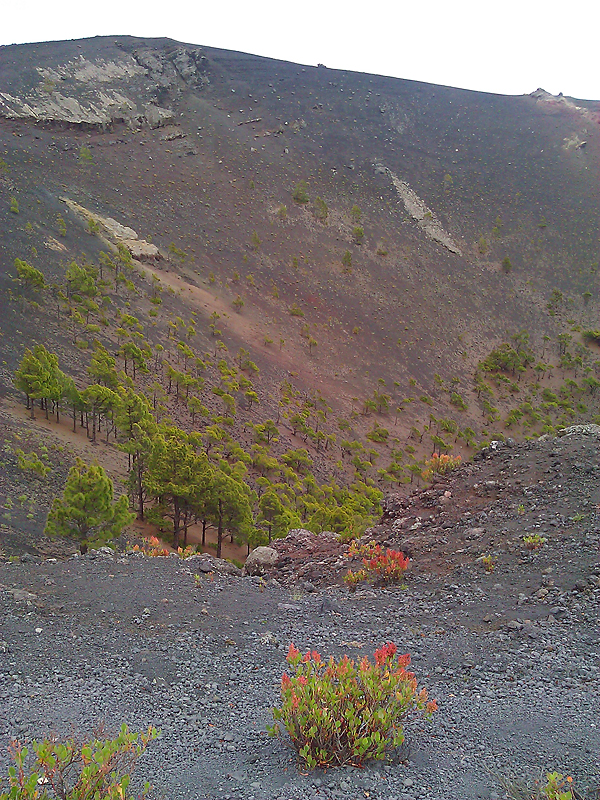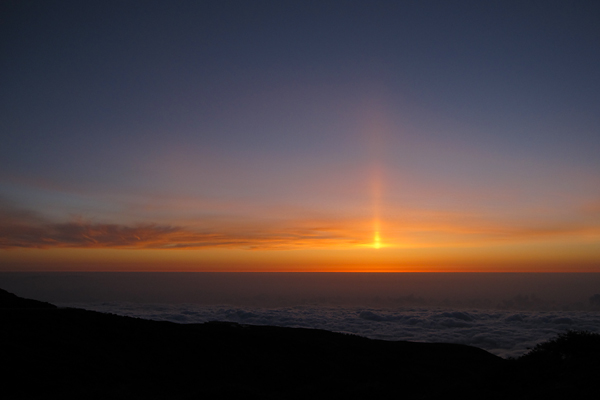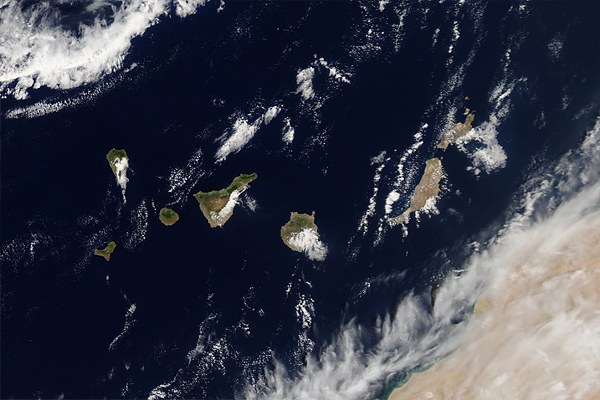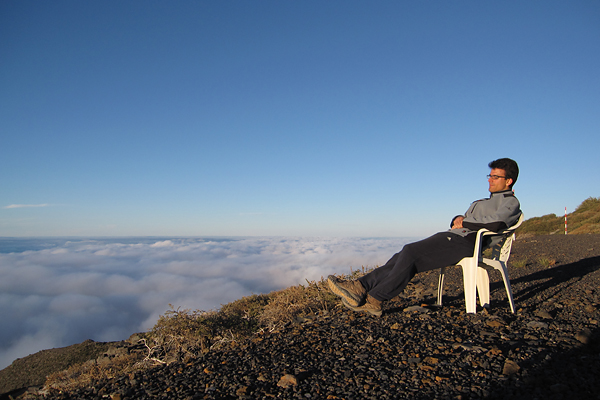First of all, during my observing run, I rode my bike 25 times up and 25 times down between the ORM Residencia (the place where my room was and the food got served before the work nights), which – at a height of 2300 meters ASL – was a quite good warm-up (climbs of 2.7 km @ 7%) for this week’s cycling. This year, my best time uphills was a half minute better than last autumn! And on average, I was also much faster. Still, I have to face the fact that I am not a very good climber… After my last night at the telescope, I quickly packed everything, and immediately came down to Santa Cruz, to have a day of sleeping and eating (and switching back to a normal day/night rhythm).
So the first day of real holidays – meaning real cycling – was Tuesday, the 17th of May. I only wanted a relatively easy and short ride (keeping my bigger plans for the coming days in mind), so I rode to the south of the island to visit one of the youngest volcanic formations, the Volcán de San Antonio. After a short but really curvy 3rd category climb from Santa Cruz (6.53 km @ 5.4% with a maximum over 100 meters of 9.0%), the rest of the road was only hilly, with slight climb towards Fuencaliente.
The weather was not the best, I rode through low clouds and even got a bit of rain, but with temperatures around 20°C, you can not really complain about it. And anyway, I was prepared for everything ;) I even walked along the rim of the crater (after paying the 3.5 € entrance fee), but I had only my smartphone with me to take pictures with – though for blog-sized images, the quality is still OK, as you can see. It was very interesting, and the view was also great from the top. After the short, but – as I was still wearing cycling shoes – not that comfortable walk, I rode back home, so the day was over after only 67.3 km and an elevation gain of 1058 meters. On-line data from the day can be seen here. Then later that day I was just watching the Giro d’Italia (with English commentary, oh yeah!), and eating a lot to have energy the coming day. Of course I had dinner at my favorite place, the Pizzeria Piccolo, which is just on the other side of the street ;)
To be continued…




